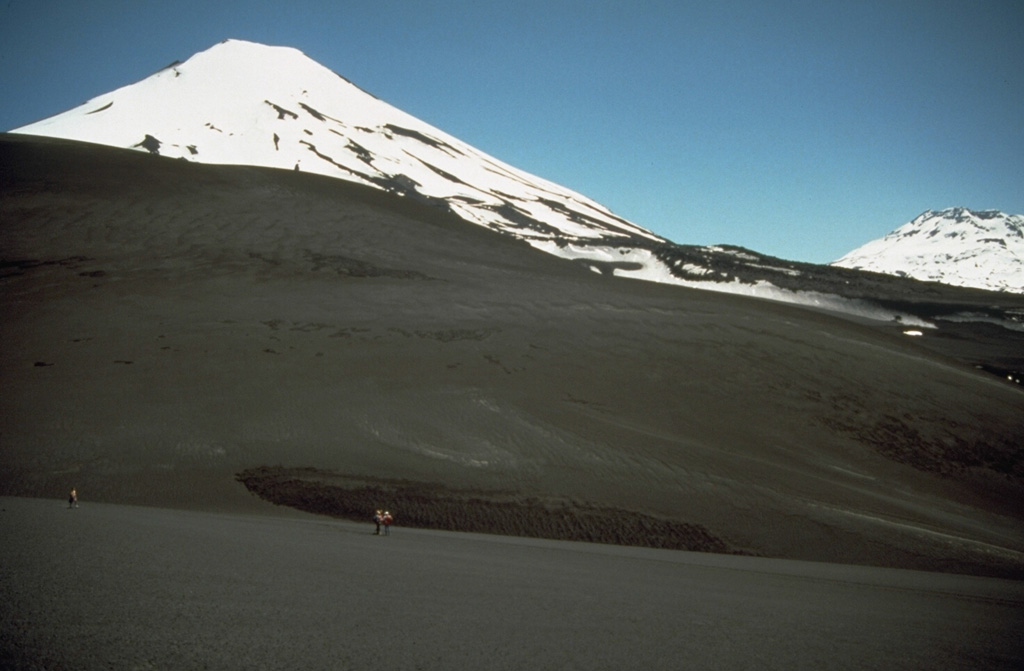Global Volcanism Program | Image GVP-04860

Lonquimay (left) is a small, flat-topped, symmetrical stratovolcano of late-Pleistocene to dominantly Holocene age located immediately SE of the largely Pleistocene Tolguaca volcano (extreme right). The Cordón Fissural Oriental fissure zone extends 10 km NE of Lonquimay and has produced a series of vents and cinder cones that have been the source of voluminous lava flows in historical time. Major lava flows erupted during 1887-90 and 1988-90 traveled up to 10 km from their NE-flank vents.
Photo by Norm Banks, 1990 (U.S. Geological Survey).
![]() This image is made available as a Public Domain Work, but proper attribution is appreciated.
This image is made available as a Public Domain Work, but proper attribution is appreciated.

Lonquimay
